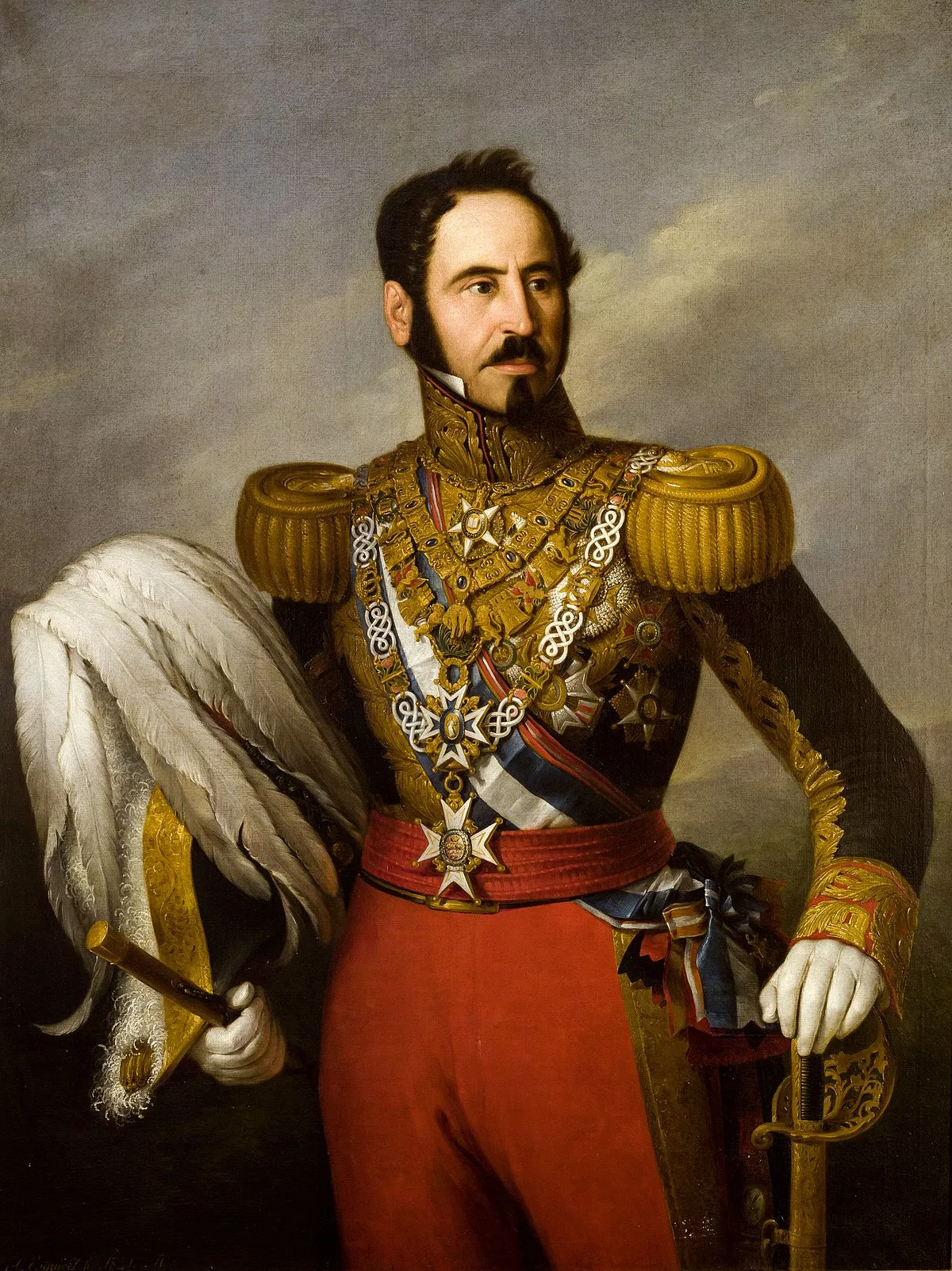 1.
1. Baldomero Espartero served as the Regent of the Realm, three times as Prime Minister and briefly as President of the Congress of Deputies.

 1.
1. Baldomero Espartero served as the Regent of the Realm, three times as Prime Minister and briefly as President of the Congress of Deputies.
Baldomero Espartero would become a champion for the Liberals after taking credit for the victory in the First Carlist War and replaced Maria Christina as regent of Spain in 1840.
Baldomero Espartero was ousted from the regency in 1843, temporarily distancing from politics.
Baldomero Espartero was called to government after the 1854 revolution, opening the two-year period known as the Bienio Progresista.
Baldomero Espartero was born at Granatula de Calatrava, a village of the province of Ciudad Real.
Baldomero Espartero was the ninth child of Manuel Antonio Fernandez-Espartero y Canadas, a master carpenter, who wanted him to become a priest, and wife Josefa Vicenta Alvarez de Toro y Molina.
In November 1809, age 16, Baldomero Espartero enlisted in the Regiment of Infantry "Ciudad Rodrigo" in Seville, seat of the Central Supreme Junta.
Baldomero Espartero joined the Military Academy of the Island of Leon in September 1810, and he was poised to join the Corps of Engineers thanks to his skills in mathematics, technical drawing, fortification and military tactics, but following a failed examination, he was returned to the infantry in 1813.
For eight years, Baldomero Espartero distinguished himself in the struggle against the colonists.
Baldomero Espartero was wounded several times and was made major and colonel on the battlefields of Cochabamba and Sopahuy.
Baldomero Espartero returned to Spain, and, like most of his companions in arms, was socially discredited for some time.
Baldomero Espartero was sent to the garrison town of Logrono, where, on 13 September 1827 he married Maria Jacinta Martinez de Sicilia y Santa Cruz, an orphan since 16 raised by her maternal grandfather, the most important landowner in Logrono.
Baldomero Espartero became, on the death of King Ferdinand VII during 1833, an ardent defender of the claim of his daughter, Isabella II, to the Spanish throne.
Baldomero Espartero was quickly promoted to a divisional command and then made a lieutenant-general.
Baldomero Espartero displayed such radical and reformist inclinations that he became popular among the lower and middle classes; his popularity lasted more than a quarter of a century.
Baldomero Espartero's troops included the British Legion commanded by Sir George de Lacy Evans.
Meanwhile, on 18 June 1837 Baldomero Espartero was nominated for the first time as the 7th Premier of Spain, until 18 August 1837.
Baldomero Espartero pursued the enemy and obliged him to hurry northwards, after several defeats.
Baldomero Espartero won the Battle of Ramales on 12 May 1839, earning him the title of Duque de la Victoria.
Baldomero Espartero was styled El pacificador de Espana, was made a grandee of the first class, and received two dukedoms.
Baldomero Espartero soon became virtually a dictator, as Queen Christina became offended by his popularity and resigned, leaving the kingdom very soon afterwards.
Baldomero Espartero's popularity enabled him to defeat moderate military rebellions across Spain during 1841.
Baldomero Espartero suppressed the Republican rebellions with as much severity as he did the military pronunciamientos of Generals Concha and Diego de Leon.
Baldomero Espartero defeated a rebellion in Barcelona, but on his return to Madrid was welcomed so weakly that he perceived that his prestige was decreasing.
From this position Narvaez issued an ultimatum in a dispatch to Baldomero Espartero, who, deeming resistance useless, embarked at Cadiz on 30 July 1843 for England, and lived quietly until 1848, when a royal decree restored to him all his honors and his seat in the senate.
Baldomero Espartero was the 42nd Grand Cross of the Order of the Tower and Sword.
Baldomero Espartero refused to allow himself to be named as a candidate when the Cortes of 1868, after the Revolution, sought a ruler.
Baldomero Espartero was a typical Spanish soldier-politician, but he sometimes had difficulty accommodating himself to courtiers and professional politicians.